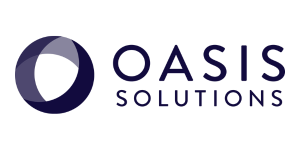Business owners have a myriad of options when determining which enterprise resource planning (ERP) solution best suits their needs. From hosted solution options to cloud-based software-as-a-service (SaaS) and even industry-specific solutions, it's easy to understand why business owners can find the software evaluation process overwhelming when it comes to weighing functionality and features.
With 30+ years of implementations under their belts, the Oasis team knows just a little about ERP implementation, the dos and don’ts, and how to navigate this complex landscape. We’ve put our heads together and identified the most common mistakes C-level executives make when selecting and implementing an ERP system, as well as how to avoid these costly mistakes.
- Not requirements gathering
A common mistake that is made is taking the current state of your business processes and simply automating those with an ERP system. Not taking the time to identify pain points in your current processes is a missed opportunity. Implementing a new ERP presents the opportunity to identify and improve, or eliminate processes, that aren’t working so bad processes aren’t automated. Adjust or eliminate these inefficient processes so your migration to the new system is as efficient as possible. - Leaving end users out of the decision-making process
While C-level buy-in is essential when implementing an ERP system, oftentimes organizations neglect to engage key employees in the process: employees across all departments that will be utilizing the system the most. From warehouse to finance to operations to manufacturing, all stakeholders should be engaged in finding and implementing the best ERP solution for your business. - Neglecting to budget for technology staff
Don’t skimp on expenses when budgeting for your new ERP implementation. This isn’t a change you make once a year, every other year, or even every couple of years. This is a once in decade decision that shouldn’t be taken lightly and your budget should be properly estimated to reflect that. Leaders should allocate for maintenance of the ERP system, as well as level of talent needed to get the project implemented successfully. When organizations try to accomplish more for less, you see failed implementations and issues arise later. - Not considering pros and cons of on-premise vs. cloud-based
Don’t commit to a on-premise or cloud-based ERP solution without doing your due diligence. Organizations should evaluate several factors before determining the right fit for their business. A cloud-based ERP solution requires sufficient internet connectivity, subscription-style payments and caters to remote employee access, among other benefits. On the other hand, on-premise requires dedicated IT, updated servers, in-house hardware and larger initial upfront fees, but caters to those organizations that want to host software on their own servers. Weigh both options carefully and what they will mean for your business before deciding which will be right for you. - Being dazzled by features (that you don’t need)
Thinking that the longest feature list equates with the best ERP solution for your business. An organization should not select a new ERP system purely by who has the most robust feature matrix; depth and breadth of features and functionality is important, but take into consideration the solution’s success in your particular industry, customization and flexibility and integration ability. Don’t forget, it’s more important that your new ERP system addresses your organization’s particular requirements than having a long list of unnecessary features. - Trying to implement your ERP solution all at once
Not taking an agile approach to implementing your ERP solution. Many organizations attempt to determine all the implementation requirements up front, completely implement the system, go through user training and then go live. This is the traditional waterfall approach and it’s just not practical. An agile approach allows for an implementation that involves taking small steps, end user involvement, testing, identifying gaps and repeating this process through completion. - No change management
Change management is a must when successfully implementing a new ERP system. Business transformation can not happen without effectively managing change across people, technology and process. Identify necessary process changes early on in your ERP implementation project; this helps to avoid rework and ensures that your end users thoroughly understand the challenges and changes that will occur upon go live. End user training should include transactional aspects of end users’ roles, interactions with users, as well as systems outside your new solution. - Not investing in an implementation team
A critical element of any ERP implementation is a properly structured internal implementation team. A successful implementation team consists of the right individuals who have C-level buy in and have been given the decision-making authority to move the implementation project forward. This often requires the reassignment of daily responsibilities so that priority can be given to the project migration and implementation. A properly structured implementation team can mean the difference between a successful ERP solution rollout and failure. - No regular communication across departments
Neglecting to create a project communication plan for all phases of your ERP implementation project. Comprise a core team of individuals from different departments across the organization that has influence in the areas that will be most affected by the new ERP system. Develop a plan to make sure they are fully up-to-date on the ERP project progress, and in turn, keep their departments/affected areas updated. - Not having a maintenance plan
Thinking that the work stops once your ERP system goes live. Once your new ERP is successfully in place, your organization must have a maintenance strategy to ensure the system is maintained and improved on a regular basis so it doesn’t become outdated/obsolete. Neglecting to maintain your ERP system can open your organization up to holes in your business processes and put you at risk for security issues. Someone in your organization should be assigned the responsibility to ensure the system is running smoothly and up to date with the latest applications.
Related Articles:


